YYYYMMDD >>> BACK HOME <<< >>> SELECTED FEATURES <<< >>> INTERVIEWS <<<
[20250121]
‘~/A_LOVE_LETTER_TO_KALA’ by AGUS WIJAYA at PASSAGE [from 20250117 to 20250220]
[Photos: Jessica Maurer]

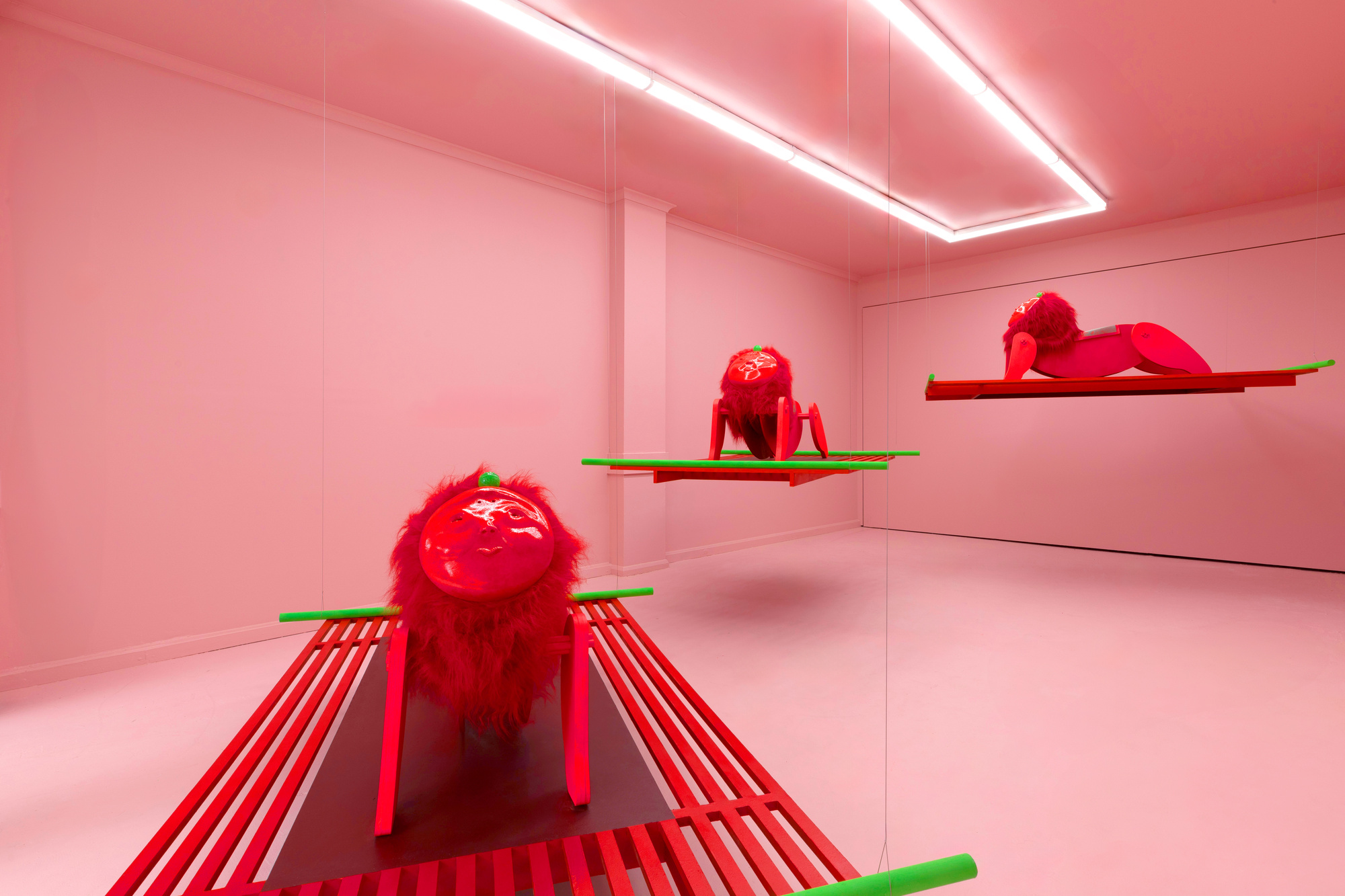

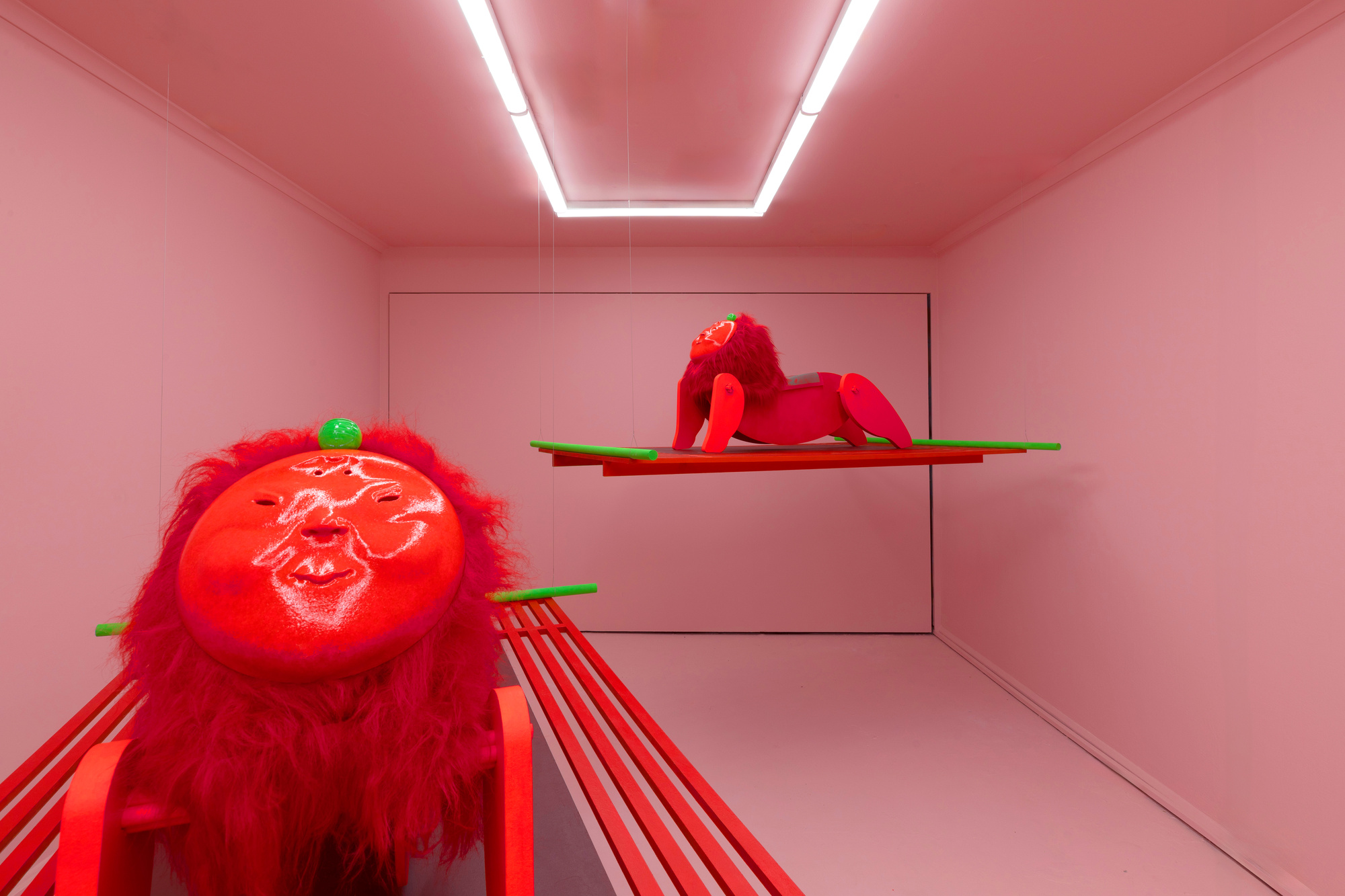

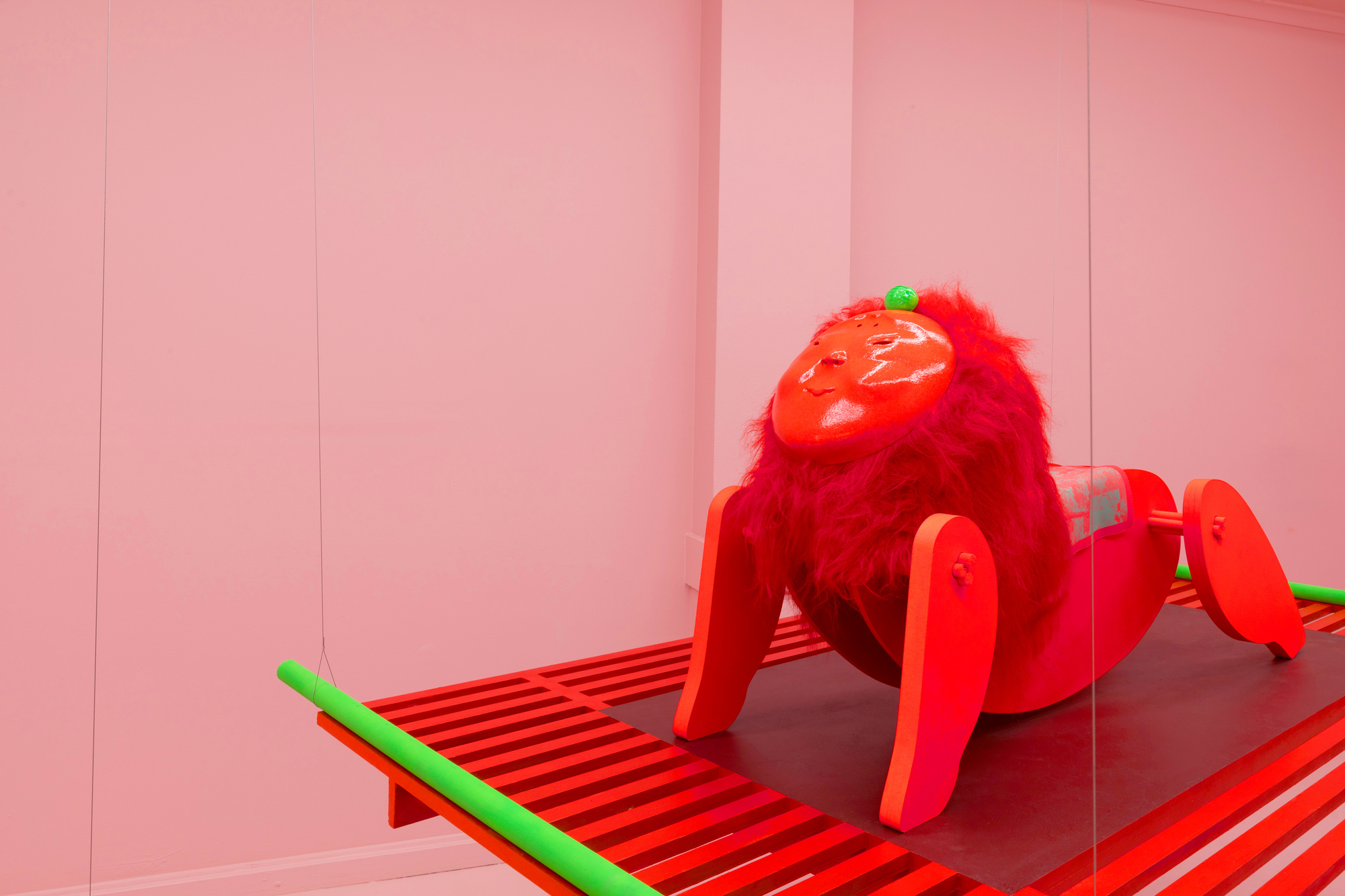



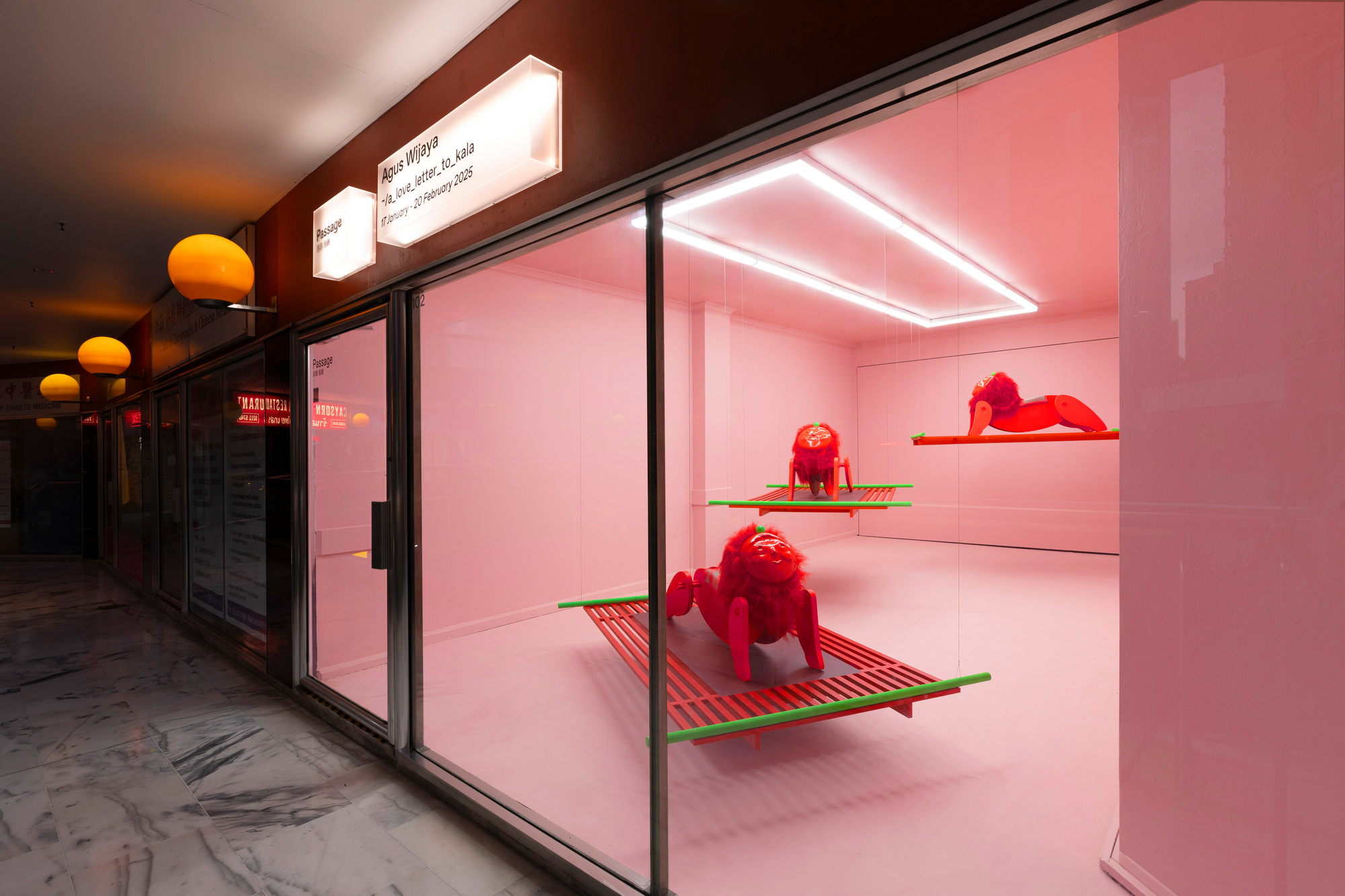
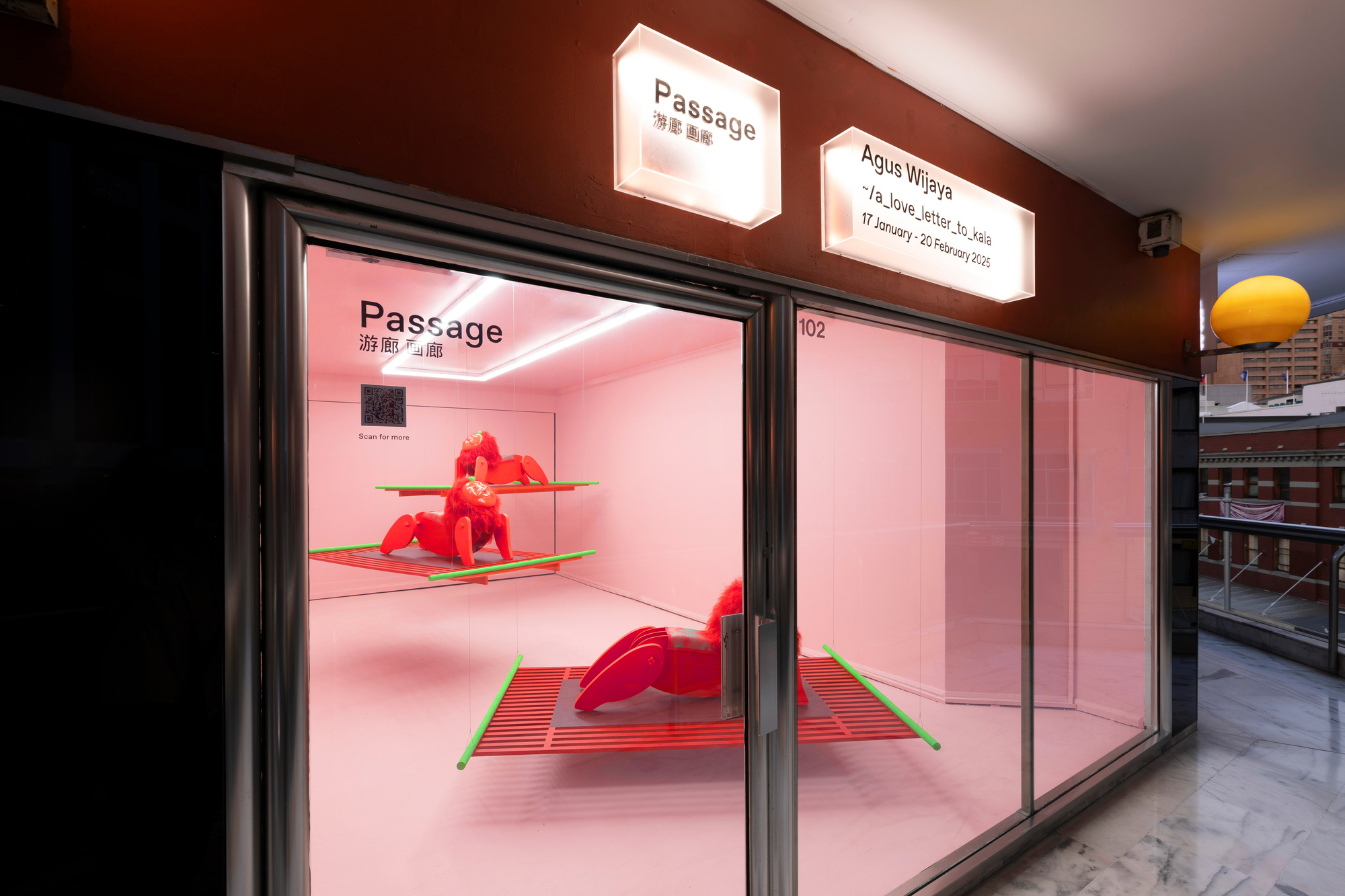


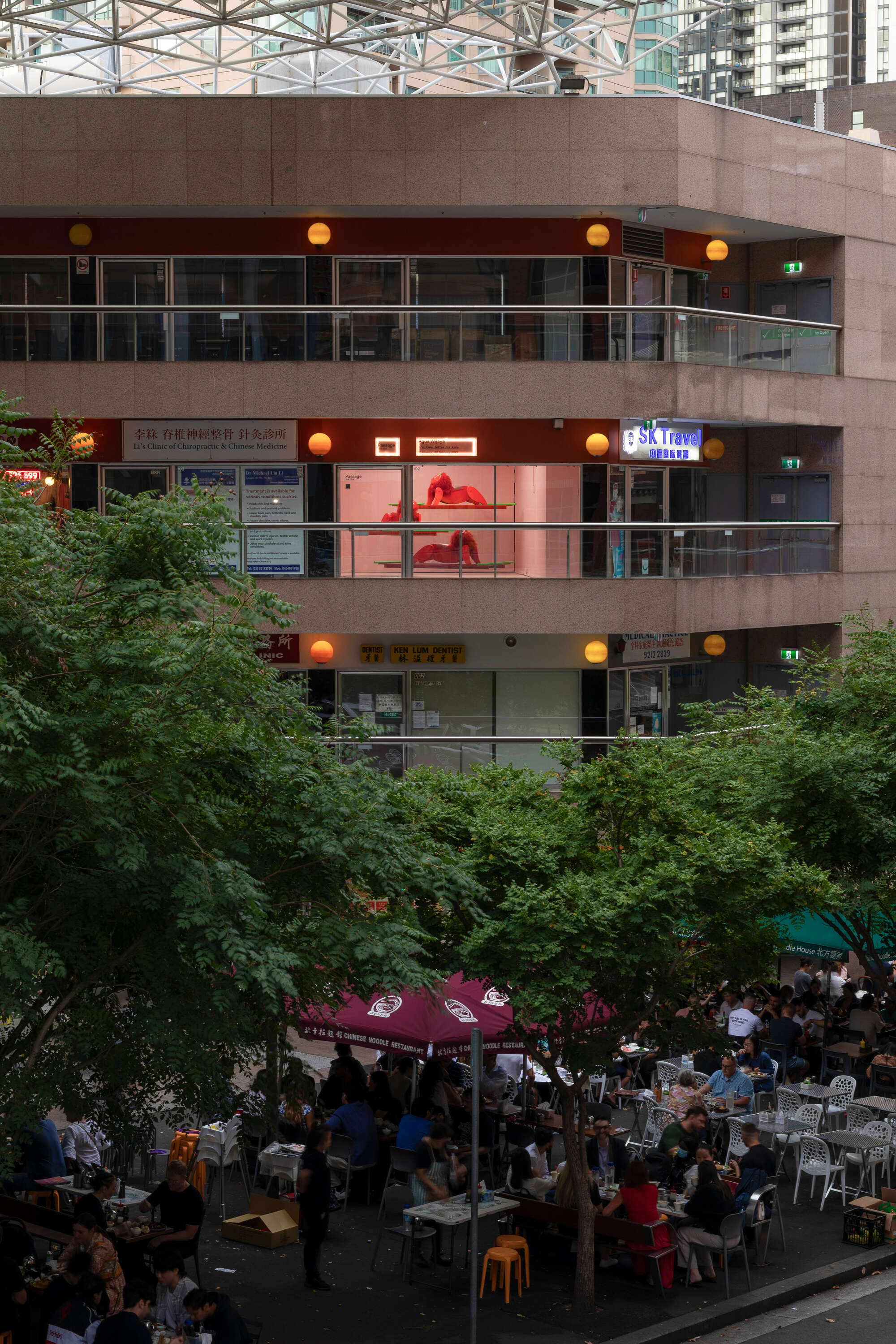

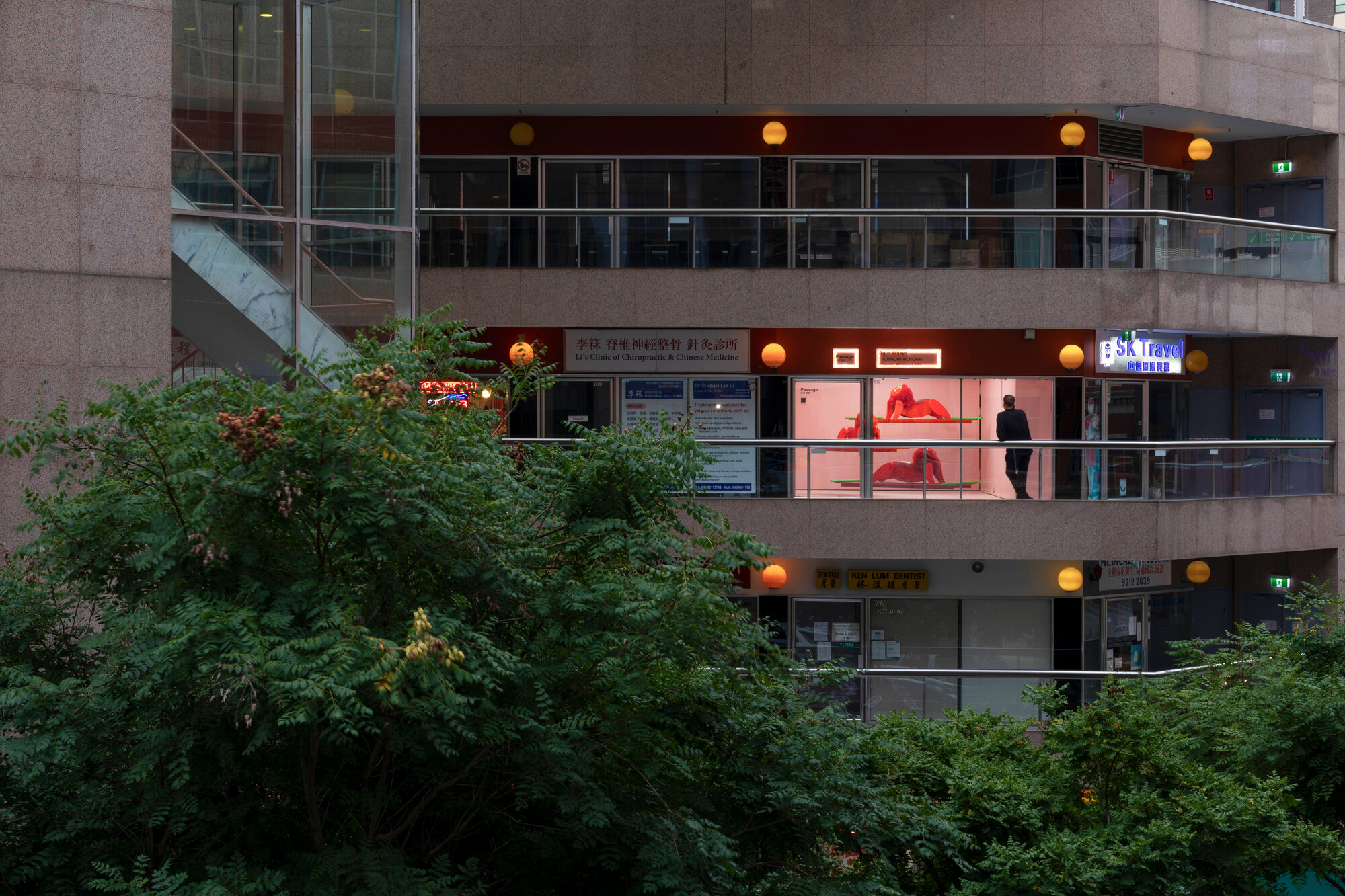


Sisingaan (‘imitation lion’ / ‘lion play’), a traditional lion dance from West Java, serves as a focal point in Agus Wijaya’s latest exhibition, ~/a_love_letter_to_kala. Often performed to mark rites of passage or cultural celebration, it involves carrying participants on lion-shaped effigies, symbolising resistance, then celebration. Drawing on this cultural tradition, Wijaya abstracts the lion figures into large red sculptures that explore how cultural practices shift across time and borders, intertwining personal and collective memory. Through this, he questions the forces that shape us—those that bind us to our past while nudging us elsewhere.
In ~/a_love_letter_to_kala, Wijaya presents what he calls the “bad version” of the lion figures—an abstraction rather than a faithful reproduction—reflecting his journey of disidentification and complex relationship with his Chinese-Indonesian heritage. Since Dutch colonisation, Chinese-Indonesians have faced systemic marginalisation, prejudice and cultural suppression. The sculptures evoke a shifting sense of self—a space between comfort and unease—capturing the ongoing negotiation between cultural continuity and dissonance.
The exhibition’s title, ~/a_love_letter_to_kala, references Kala, the Hindu and Buddhist god of time, Kala in Indonesian, means time, era or moments, and Kala in Sanskrit symbolises time, fate or death, whose domain encompasses both creation and destruction. ~/a_love_letter_to_kala serves as a love letter to time itself—its inevitable, cyclical passage and its role in shaping who we are. Just as Sisingaan figures transform across generations, rituals and interpretations, so too do we—constantly revisiting, reinventing and redefining our sense of self. Wijaya’s reimagining of the lion figures acts as both a critique and homage to how cultures preserve and transform their rituals. Through his large-scale abstract sculptures and experimental new media, Agus Wijaya prompts viewers to reflect on the traditions that shape their lives and how these traditions persist, adapt and evolve over time.
Drawing on his experiences growing up in Cianjur, West Java, and his life in Australia, Wijaya bridges personal and cultural histories, questioning how identity is shaped across time and place. His fragmented lions embody a reconnection with heritage while probing the tension between preservation and transformation—whether change represents a rejection of the past or an extension of its story. By abstracting tradition, Wijaya calls attention to its context, exploring what it means to belong and evolve. In this process, there is both connection and disconnection, an ongoing negotiation between tradition and transformation that invite us to embrace both continuity and change.
[Text: Passage]
©YYYYMMDD All content and design by Daniela Grabosch + Ricardo Almeida Roque unless otherwise stated. Images, Videos and Texts can only be used under permission of the author(s).